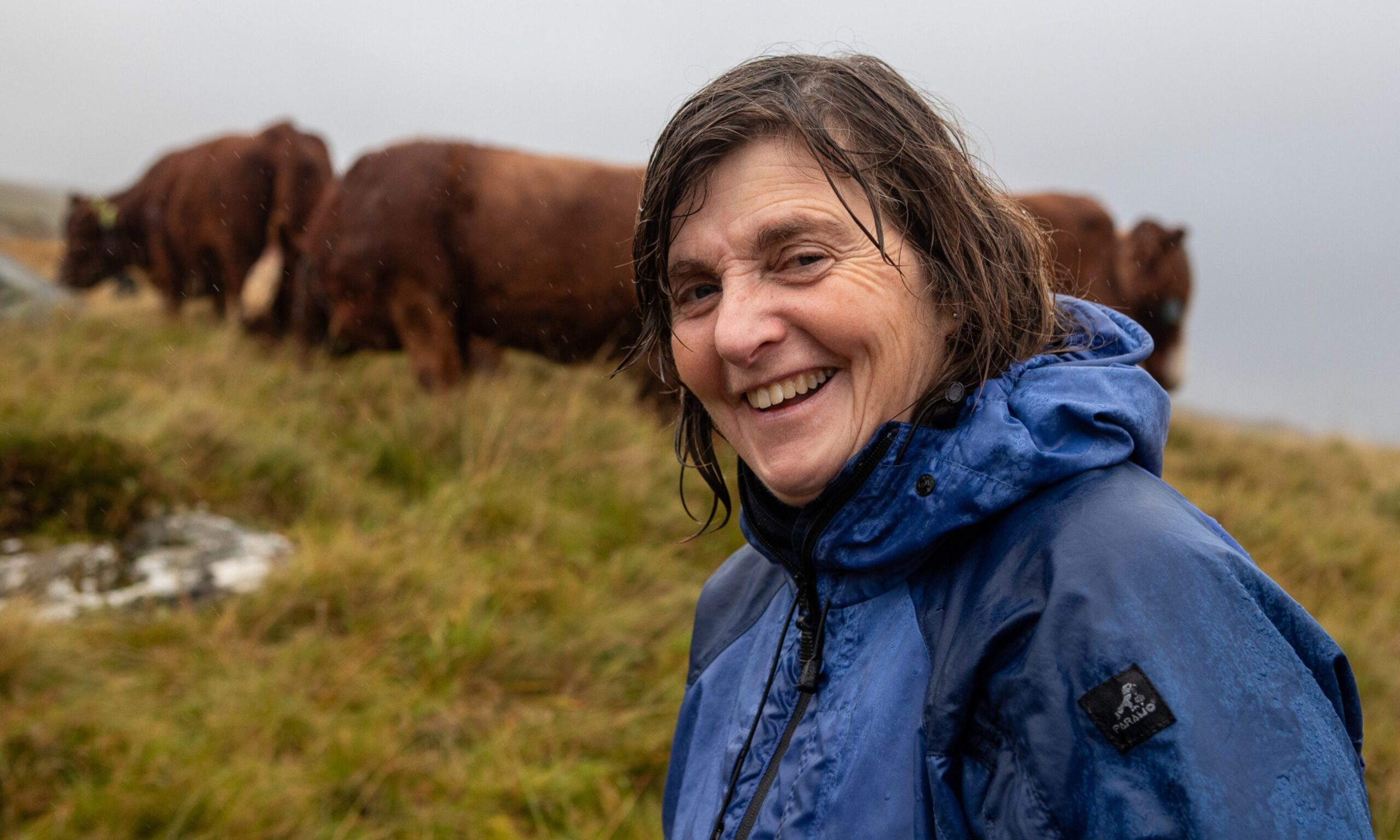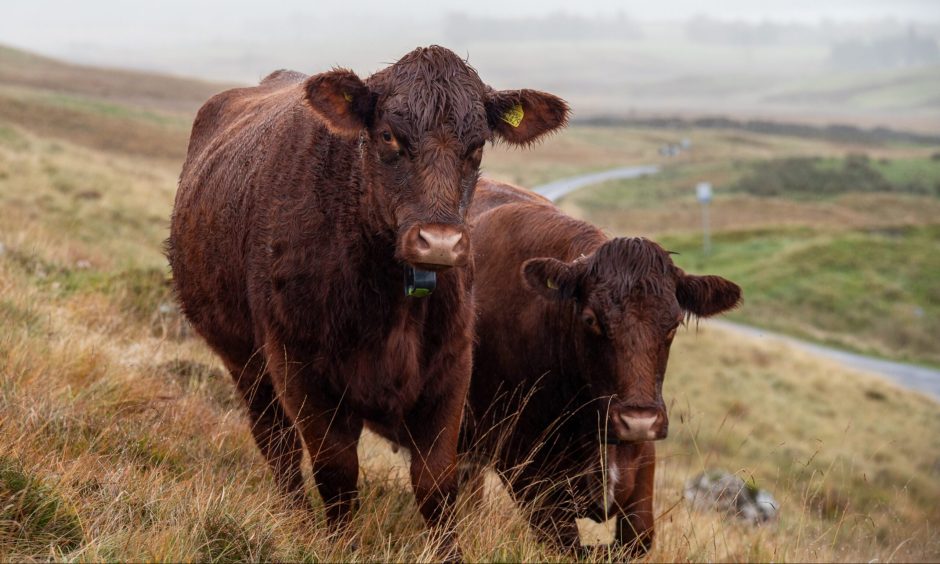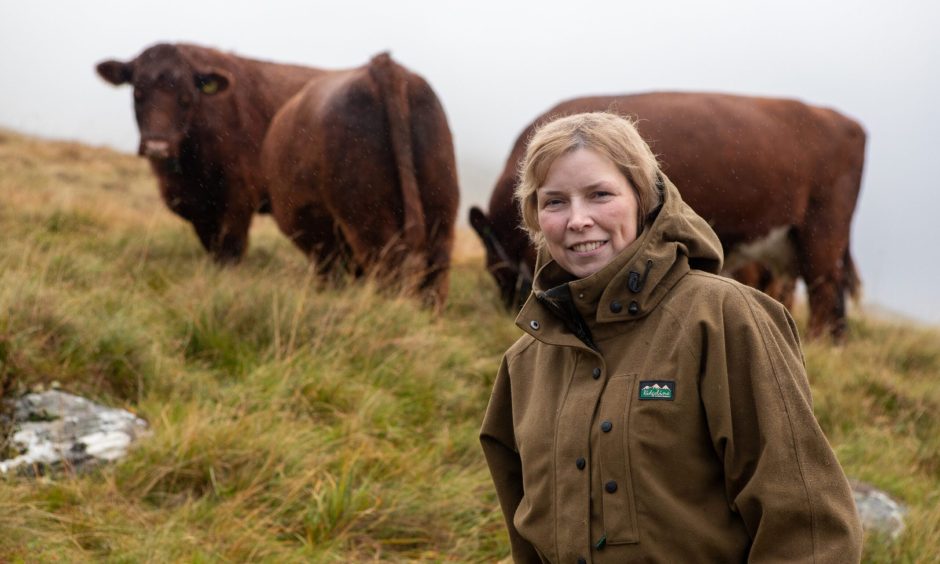Cows are finally playing the “good guys” in the fight against climate change as they work to revitalise Perthshire Munro Ben Lawers.
To combat the effects of overgrazing the land on the hillside, the National Trust and local farmers have joined forces to enhance the area’s biodiversity.
This summer, the nature reserve, near Loch Tay, has been host to a small herd of 28 cows.
Property manager, Helen Cole, explains: “We were all very excited when we actually got cattle back on there.
“It’s probably the first time that cattle have been seen on that hillside for a couple hundred years.
“Overgrazing has had a negative impact on a number of habitats and species on the reserve.”
But this “less intensive” form of grazing will improve the landscape, rather than damage it.
GPS tech keeps Ben Lawers coos on track
The luing cattle are tracked using pioneering GPS technology, each cow wearing a nifty collar which keeps an eye on their whereabouts.
It is through these collars that the cows can be herded into a virtual “field” decided by the farmers.
Once the cattle have grazed in a spot for a period of time, the farmers can draw another virtual field on an app.
Then the cows, encouraged by a series of beeps, will move on to the new area to graze there.
This means the farmers can herd the cows from the comfort (and warmth) of their home five miles away, without having to hike up the hill to check on them.
If a cow somehow removes its collar, farmers Peter and Maj get an alert, and will head up to check on it.
Being able to constantly shift the animals around means they are grazing the hillside evenly, which is better for the landscape itself.
So how does the natural restoration work?
“Cattle graze in a different way,” Helen explained, “they’re a bit more generalist if you like. They will eat more different things.
“There are also benefits from the cattle tramping which should promote natural regeneration.
“We’re hoping that the cattle will break up the ground a bit near the woodland, creating niches for natural regeneration of trees and shrubs.”
She continued: “In some of our existing exclosures, where we’ve been actively restoring woodland and shrubs, the biodiversity has just exploded.
“By creating more varied habitats, you’ll get this greater biodiversity.
“The number of invertebrates that occur there has increased with there’s an increase in bird fauna, as well.
“So we’re anticipating a similar response happening in this area thanks to the cows.”
‘Low intensive’ farming at Ben Lawers a win/win situation
Cows are now the “good guys”, confirmed Helen.
“It is not an intensive form of farming, but a more sympathetic to the environment form of farming,” she said.
“It’s an illustration that things done in moderation are good.”
Maj McDiarmid and her husband, Peter, are local farmers who own the cattle.
Maj, who farms in the “shadow of Ben Lawers in the East” said the project has been a “learning curve”.
“It is such a clever system,” she said. “[The GPS collars] mean that areas which were previously unsuitable to be fenced for grazing can now be utilised.
“During the summer when the grass is growing, it has been a huge benefit
“With the virtual field, we can, say, target next to see an existing woodland so that they can churn up the ground there so that any seeds from the trees can be distributed more evenly and hopefully, take root.”
“Cattle can really be the answer,” Maj added, “they can lock up carbon in their grazing.
“It’s the opposite of intensive farming in a way, it’s very extensive.
“The cattle are very sparse and have over 300 hectares of ground, so their impact on the ground is very low.”
The cows have been grazing on the hillside since May and will continue till the end of October.
Both parties seem keen to bring the cattle back to Ben Lawers next year.














Conversation